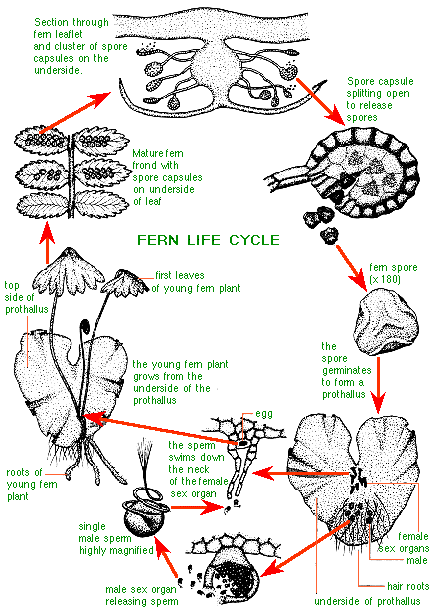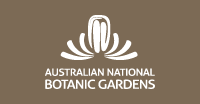Growing ferns from spores
The fern life cycle
Ferns do not flower but reproduce sexually from spores.
There are two distinct stages of the fern life cycle. Mature plants produce spores on the underside of the leaves. When these germinate they grow into small heart-shaped plants known as prothalli. Male and female cells are produced on these plants and after fertilisation occurs the adult fern begins to develop.

Collecting spores
To collect spores place a portion of mature frond on a piece of paper in a dry place. If spores are ripe they will be shed onto the paper and will appear as black, brown or yellow 'powder' which is a mixture of spores and fragments of the spore cases (sporangia).
Sowing method
It is important to sterilise the germination mixture before sowing the fern spores by pouring boiling water over it This kills the spores of fungi and other plants that may germinate and crowd out the developing fern prothalli.
Spores should be sparsely sprinkled on a medium such as finely chopped tree fern fibre, peat moss or sphagnum moss. Equal parts of loam, peat moss and finely crushed terracotta spread to a depth of 2cm over a base of vermiculite also forms an excellent germination base.
Once sown the containers should be covered with plastic or glass (allowing some airspace) and kept at around 20 degrees C in indirect light. Spores take from 2 to 6 weeks to germinate.
Potting on
After a few weeks the germinating spores appear as a mossy growth. When the prothalli are formed and well developed they may be pricked off into a punnet containing a finely sifted soil mixture. The container should be covered with glass or plastic until the fronds appear. The developing ferns should not be exposed to direct light.
Further potting up should be into a coarser textured mix with relatively high
levels of organic matter. The mix should drain well. Materials such as sharp
river sand and gravel-sized charcoal pieces may be useful for this purpose.
![An Australian Government Initiative [logo]](/images/austgovt_brown_90px.gif)







